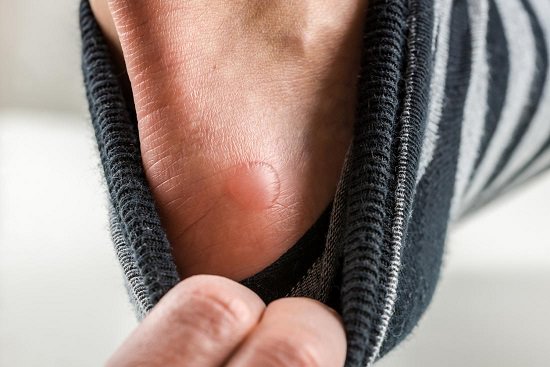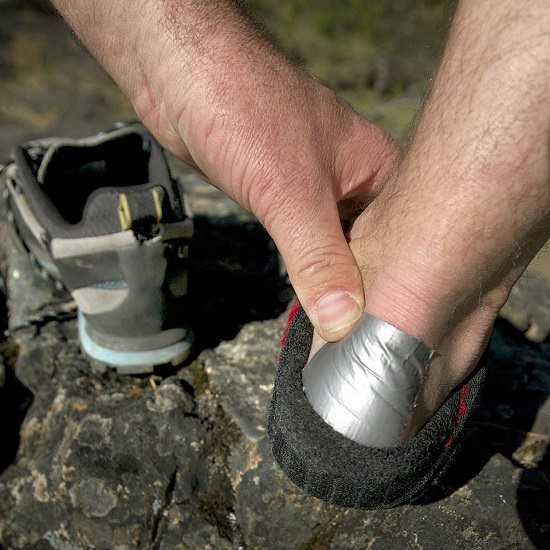Wondering how to use duct tape for blisters? Read through this informative article to know how you can use duct tape for blisters treatment at home!
How do Blisters Form?
Most of us have suffered painful blisters at some time or the other in our lives. Blisters form mostly on your feet due to friction when you wear ill-fitting footwear or when you walk or hike long distances.
The science behind blisters’ formation is that your skin’s outer layers move more quickly than the inner layers. When you walk, your shoes and socks rub against your feet’ skin, causing the outer layers of the skin to separate. Fluid fills the space between your skin’s outer and inner layers, and this forms a blister.
Blisters develop more commonly on warm, moist skin or sweaty feet. The most common areas where blisters form are on the ball of the heel, sides, or the top of the toes, especially the big toe and the smallest toe, behind the ankle and the sides of the foot.
Benefits of Using Duct Tape for Blisters
Duct tape is a tough, 2-inch wide silver tape with a very strong glue and a fabric core. It is soft, smooth, and flexible and provides an almost frictionless surface so that your sock or shoe can glide over it harmlessly without hurting the skin of your feet. Hikers and athletes vouch for the efficacy of duct tape in protecting the feet from painful blisters.
When a spot on your skin is red and burning, and the blister is yet to form, wrap the area in several layers of duct tape to reduce the friction between your foot and shoe. Always ensure you wrap duct tape on the skin that is dry so that it sticks well. Wrap the duct tape while keeping the surface smooth and stretched without any wrinkles.
If a blister has already formed, cover it with a piece of gauze or moleskin and then wrap the duct tape over it to prevent the sticky glue from touching the blister. You can also apply an ointment like Neosporin on the blister and then cover the spot with duct tape.
Use several layers of duct tape to keep it firmly in place. Do not wrap the tape too tightly, as it may hinder blood circulation. Snip the ends of the tape to make them rounded so that they do not catch on the socks or shoes and peel off.
The downsides of using duct tape are that it is not breathable, and the glue on it is meant for industrial use and not for sensitive skin.
Other Home Remedies to Cure a Blister

It is not advisable to break a blister, as broken skin is more prone to infection. You can use aloe vera gel or creams containing aloe vera on blisters as it speeds up wound healing and skin regeneration. You can use petroleum jelly or Vaseline on blisters to promote healing and it can help in preventing the blister from popping.
Coconut oil has anti-inflammatory and tissue repairing properties which makes it effective in treating blisters. You can apply apple cider vinegar on blisters as it has antibacterial properties and prevents infection. You can also apply antiperspirants to your feet to prevent moisture. Soaking the feet with a blister in cold black tea or green tea helps to ease the pain and reduce inflammation.
Blister Prevention
- Lubricating feet with Vaseline prevents chafing and friction.
- Buy branded footwear that is well designed and wear a size that is neither too tight nor too loose but fits just right. Make sure there is enough room for your toes to move.
- Don’t wear new shoes when you are planning to walk a long distance. Wear shoes you have already broken in.
- Pull-on socks that are well-fitting and keep your feet dry.
- Wear insoles that help prevent your feet from sliding inside your shoe. Keep your toenails short.
- Try duct taping the areas of your foot that are prone to blister before you put your socks or shoes on.
- If the blister is accompanied by fever or intense pain or is filled with pus or blood, seek medical attention.

